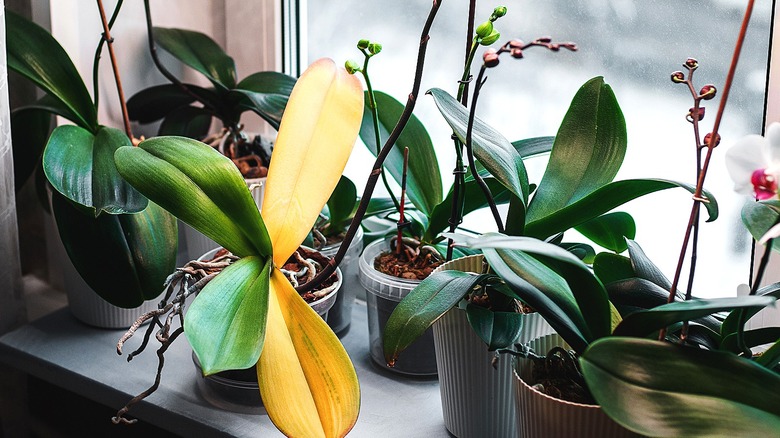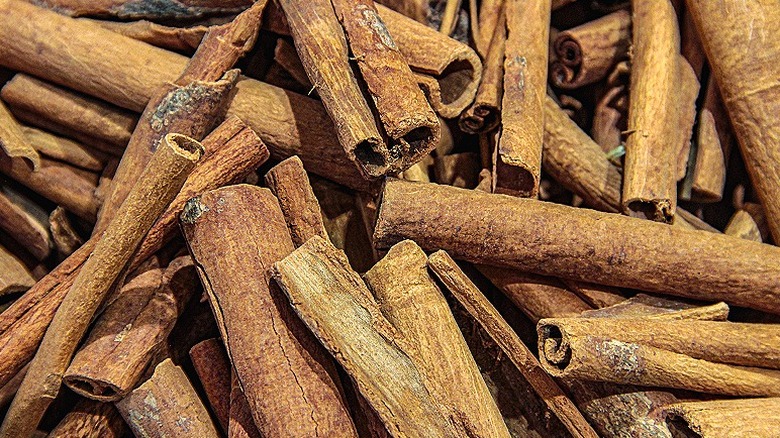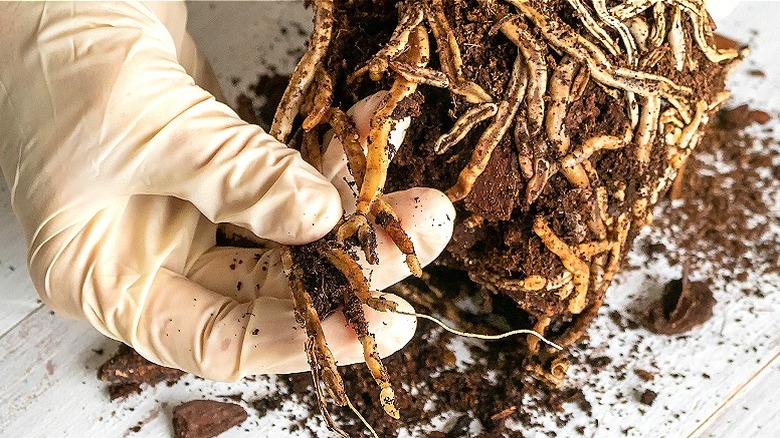Avoid This Popular Cinnamon Myth If You Want To Save Your Orchids
The delicate beauty of orchids makes them a well-loved plant to grow in homes, but they're susceptible to a range of diseases, including fungal infections. A common natural remedy for these infections is cinnamon, a spice noted for its antifungal and antibacterial abilities. Still, cinnamon isn't ideal for treating orchids, especially those suffering from root rot, as doing so can cause significant risks to the viability of the plant.
Cinnamon is often touted as a treatment for a range of conditions, especially fast-growing fungus, but it's also a caustic substance, and the damage it can cause to the root bulb when the plant is already taxed is likely to lead to its early demise. Root rot, which is often caused by saturation with too much standing water, causes the roots of a plant to actually rot, breaking down over time until the disease kills the plant. It generally happens under the soil where you can't see it, which is why some people turn to the use of cinnamon as a treatment, believing it can help via its antifungal/antibacterial properties.
Under certain circumstances, however, even small amounts of cinnamon spice can prove dangerous to a plant and can kill your orchid (by drying it out). Before you use cinnamon on your plant for root rot, you may want to explore what exactly is causing the damage to your orchids in the first place, and, thereby, what treatment is best suited for their needs.
Why cinnamon isn't the best choice for root rot
Orchids have a very delicate structure, right down to their roots, and they're very sensitive to being overwatered as well. As a caustic, cinnamon can further damage the sensitive layers of an orchid's root ball, making it difficult for the plant to heal these areas to recover. This can be so even if the cinnamon is effective in killing the fungus spreading.
A second factor to consider is how cinnamon works as a desiccant to dehydrate surfaces, including the roots of the plant. That could seem like an ideal tool, then, considering root rot is often due to too much watering. However, again, these roots are already facing damage, and when you put cinnamon in them, it will cause the roots to dry out too much and lead to the death of the plant.
What's even more interesting is where this myth of using cinnamon to save an orchid comes from. You can (and even should) use it on a healthy orchid. If the plant is thriving and doing well, mixing a small amount of cinnamon into the soil can help to keep the soil dry enough, as well as help remove damaging fungus and bacteria. In other words, if your plant is healthy, use cinnamon, but if it's struggling, don't use it at all.
How to save an orchid with root rot
A common condition, root rot isn't something to ignore but rather to act on as soon as possible to give your orchid the best chance at recovery. You'll know root rot is present if the leaves are drooping and the flower petals may fall off. Typically, you'll also notice the soil is very wet.
If that's the case, remove the orchid from its pot to get all the potting mix or soil off the root system. That soil has a high level of fungus in it and should not be used for any other plants. By carefully removing the plant from the pot and using a wooden dowel or something similar to loosen and remove all of the dirt around the plant's roots, you'll be able to remove most of that risk factor. With disinfected sheers, cut away any dark, damaged areas of the roots, which are likely to be too far gone to recover. Then, use a fungicide (or hydrogen peroxide) on the remaining roots to help reduce any further risk.
Let the plant remain like this to dry out for at least 12 hours and up to a full day. Use a clean, dry, and disinfected new pot to replant the orchid in new soil, remembering orchids prefer tight quarters. Care for your indoor orchids with extra attention for the next few weeks.


